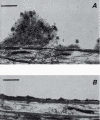The discovery of aspirin's antithrombotic effects
- PMID: 17622365
- PMCID: PMC1894700
The discovery of aspirin's antithrombotic effects
Abstract
Aspirin has long been established as a useful analgesic and antipyretic. Even in ancient times, salicylate-containing plants such as the willow were commonly used to relieve pain and fever. In the 20th century, scientists discovered many details of aspirin's anti-inflammatory and analgesic properties, including its molecular mechanism of action. In addition, the latter half of the century brought reports that daily, low doses of aspirin could prevent myocardial infarction and stroke. This finding was first reported by Lawrence Craven, a suburban general practitioner in Glendale, California. Unfortunately, Craven's work went largely unnoticed, and decades passed before his observations were verified by clinical trial. We present Craven's story, which demonstrates the value of a single physician's commitment to lifelong learning. In addition, we summarize the work of the physicians and scientists who discovered the molecular mechanisms by which aspirin exerts its antiplatelet effects. Collectively, these discoveries exemplify the complementary roles of basic science and clinical observation in advancing medicine.
Figures




Comment in
-
The history of aspirin.Tex Heart Inst J. 2007;34(3):392. Tex Heart Inst J. 2007. PMID: 17948099 Free PMC article. No abstract available.
-
The history of aspirin.Tex Heart Inst J. 2007;34(3):392-3. Tex Heart Inst J. 2007. PMID: 17948100 Free PMC article. No abstract available.
Similar articles
-
[Aspirin throughout the ages: a historical review].Rev Med Interne. 2000 Mar;21 Suppl 1:8s-17s. doi: 10.1016/s0248-8663(00)88720-2. Rev Med Interne. 2000. PMID: 10763200 Review. French.
-
Philip Majerus.Lancet. 2016 Jul 30;388(10043):458. doi: 10.1016/s0140-6736(16)31159-x. Lancet. 2016. PMID: 27529094 No abstract available.
-
The aspirin story - from willow to wonder drug.Br J Haematol. 2017 Jun;177(5):674-683. doi: 10.1111/bjh.14520. Epub 2017 Jan 20. Br J Haematol. 2017. PMID: 28106908 Review.
-
A historical review of hemostasis, thrombosis, and antithrombotic therapy.Ann Plast Surg. 1997 Sep;39(3):317-29. doi: 10.1097/00000637-199709000-00017. Ann Plast Surg. 1997. PMID: 9326716 Review. No abstract available.
-
History of drugs for thrombotic disease. Discovery, development, and directions for the future.Circulation. 1994 Jan;89(1):432-49. doi: 10.1161/01.cir.89.1.432. Circulation. 1994. PMID: 8281678
Cited by
-
The Reduction of Mortality in Acute Myocardial Infarction: From Bed Rest to Future Directions.Int J Prev Med. 2022 Apr 8;13:56. doi: 10.4103/ijpvm.IJPVM_122_20. eCollection 2022. Int J Prev Med. 2022. PMID: 35706871 Free PMC article. Review.
-
GPCRs: The most promiscuous druggable receptor of the mankind.Saudi Pharm J. 2021 Jun;29(6):539-551. doi: 10.1016/j.jsps.2021.04.015. Epub 2021 Apr 22. Saudi Pharm J. 2021. PMID: 34194261 Free PMC article. Review.
-
The role of aspirin in the prevention of cardiovascular disease.Clin Med Res. 2014 Dec;12(3-4):147-54. doi: 10.3121/cmr.2013.1197. Epub 2014 Feb 26. Clin Med Res. 2014. PMID: 24573704 Free PMC article. Review.
-
Recent trends in the prevalence of low-dose aspirin use for primary and secondary prevention of cardiovascular disease in the United States, 2012-2015.Prev Med Rep. 2016 Dec 28;5:183-186. doi: 10.1016/j.pmedr.2016.12.023. eCollection 2017 Mar. Prev Med Rep. 2016. PMID: 28070474 Free PMC article.
-
From Solution Studies of Pharmaceuticals (Aspirin and Related Compounds) to the Thermodynamics of Aspirin-β-Cyclodextrin Interaction in water and N,N-Dimethylformamide.Int J Mol Sci. 2022 Oct 4;23(19):11750. doi: 10.3390/ijms231911750. Int J Mol Sci. 2022. PMID: 36233049 Free PMC article.
References
Publication types
MeSH terms
Substances
Personal name as subject
- Actions
LinkOut - more resources
Full Text Sources
Other Literature Sources
Medical
